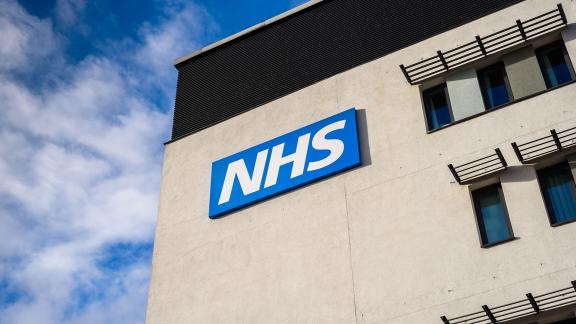Longest strike in NHS history leaves local services ‘skating on the thinnest of ice’, warn NHS leaders

The NHS is just over 48 hours away from the longest period of strike action in its 75-year history in what is usually the most pressurised week of the year, with NHS leaders warning that patient safety will again be put at serious risk.
Many NHS trusts will be skating on the "thinnest of ice" due to winter pressures and a lack of key staff as junior doctors walk out for a total of 144 hours of uninterrupted stoppages. This will lead to thin rotas and local services being placed in a highly vulnerable position. Rising levels of flu, norovirus and COVID-19 in hospitals, combined with higher NHS staff absences due to COVID-19, is heightening the risk.
While the British Medical Association and government were unable to agree to national derogations for the January strikes, there is an agreement in place whereby junior doctors can be recalled for major incidents and extreme circumstances. To help mitigate the risks, NHS leaders are calling on the BMA to respond promptly to requests for junior doctors to be recalled and for the judgement of senior managers to be trusted when they say they need urgent cover from junior doctors.
NHS leaders continue to urge the BMA’s junior doctors committee to call off the strikes and for both the government and the BMA to resume talks in the hope that a lasting compromise can be found for the sake of the patients. But with just over 48 hours to go before the start of the six-day strike, hopes are fading that a compromise will be reached. The primary focus of local NHS organisations is now on putting measures and plans in place to protect patient safety.
Matthew Taylor, chief executive of the NHS Confederation said:
"Many NHS trusts will have thin rotas and will be in a highly vulnerable position as they enter what is widely regarded as the busiest week of the year for local NHS services. Parts of the NHS will be skating on very thin ice, and they will need the BMA to back any recall requests for junior doctors when services find themselves under extreme pressure.
"With the chances of the strikes being called off all but over, the focus of every NHS leader and their staff is now on mitigating as many of the considerable risks that they face as possible. But they shouldn’t have to be forced into this position again, especially at such a busy time for local services.
"To face almost 150 hours of continuous stoppages is a serious and unprecedented risk – and one that NHS leaders and their staff have never experienced before. The good news is that the NHS has again prepared extensively and has had to become adept at planning for strikes.
"While they will again do all they can to mitigate the risks, especially for patients needing emergency care, they have again been left with no choice but to schedule in less activity in anticipation of the strikes. That means more delays for patients who have faced lengthy waits for routine treatment."
The looming strikes will add to the lengthening toll of patients who have had their appointments and operations cancelled and then rescheduled. Figures published by NHS England at the end of December revealed that the total number of appointments and operations cancelled reached 1.2 million in 2023. Last month’s walk outs by junior doctors resulted in more than 86,000 cancellations.
Unless this number is to rise even further in 2024, NHS leaders are calling for political leadership from government and a renewed sense of direction that plots a path out of the industrial action impasse. Failure to do so will further impede progress against key waiting time targets.
The strikes come at a time of major operational pressure for the NHS, with the latest winter stats revealing:
• Hospital flu cases have continued to rise rapidly and were six times higher than a month ago. Cases of Norovirus were 61% higher than the same week last year (an average of 452 patients were in hospital with diarrhoea and vomiting symptoms each day compared to 281 patients the same week last year). There were also 3,620 patients with COVID-19 in hospital on December 24, up 59% from 2,275 the previous month.
• Staff absences due to COVID-19 have risen by 51% since the end of November with an average of 2,597 members of staff off due to the virus every day last week, compared to 1,715 people at the end of November.
• The latest stats also revealed the highest number of ambulances arriving at hospitals so far this winter (93,454), while there was an average of 11,439 people each day in hospital who were medically ready but could not be discharged (however, this was over 2,700 fewer patients than the week before).
• Total general and adult bed occupancy remains high at 91.4%.
About us
We are the membership organisation that brings together, supports and speaks for the whole healthcare system in England, Wales and Northern Ireland. The members we represent employ 1.5 million staff, care for more than 1 million patients a day and control £150 billion of public expenditure. We promote collaboration and partnership working as the key to improving population health, delivering high-quality care and reducing health inequalities.



